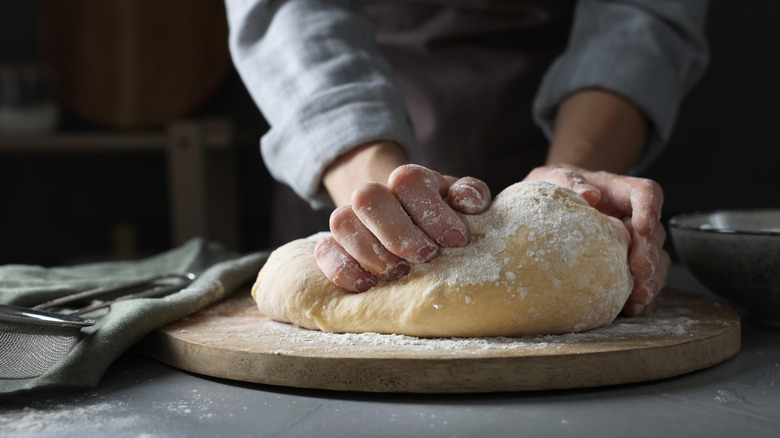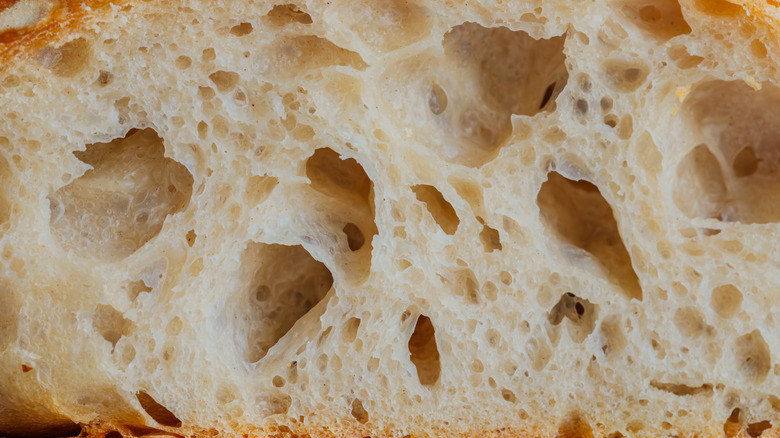Why Do You Need To Knead Bread Dough?
Maybe you're one of the many people who's tried baking homemade sourdough when times are tough. It can be tricky. Baking bread is a very physical process — once you've got some dough for a style of bread that's easy to make for beginners, you've really got to get your hands into the dough to roll and shape it into something that's ready for first rise. It can be a tiring step, but kneading too much or kneading too little are both kneading mistakes which can kill your bread before it rises. What exactly is the big deal about kneading, anyway? Why does bread need you to knead it?
We spoke to Sheena Otto, the executive baker at Sheena's Cocina and a prolific writer on the topic of bread-making strategies. According to Otto, "Dough needs to be kneaded, and should be kneaded when it's needed!" More scientifically, she explains that even though gluten forms naturally in the presence of water and flour, the dough still needs to be shaped in a specific way which traps the carbon dioxide gases inside and helps the bread leaven (or rise). "Kneading does this by strengthening the gluten so that it is able to trap and hold gas that leavens the dough and your bread as its baking," says Otto.
The science of rolling dough
To put it more simply, your bread needs to have air bubbles inside of it which will expand as the bread rises. To create those air bubbles, you need to create a network of elastic, chewy structures inside the bread crumb made of gluten. And, to do that, you roll and squish the bread a whole lot. There are certain no-knead breads which just need to rest for long, long periods of time while the gluten activates on its own. Much of the time, though, mixing flour and water isn't quite enough: "If you were to just pour water over flour, a weak gluten barrier would form right where the water and flour are in contact, and prevent the rest of the flour and water from fully incorporating," Otto says.
You also want to avoid those over-kneading or under-kneading mistakes. Too much kneading (which can be dangerously easy if you're using a mixer) will make those gluten structures too dense, while too little kneading can make it flimsy. Otto recommends something called the windowpane test to make sure you knead the perfect amount: "About 30 minutes after the dough is completely mixed, take a small piece of dough and slowly, gently, stretch it between your fingers. Does it become translucent like a window? Your dough is ready. If it rips before you can see light through it, then your dough needs more kneading." Your bread will thank you once it's done rising.

